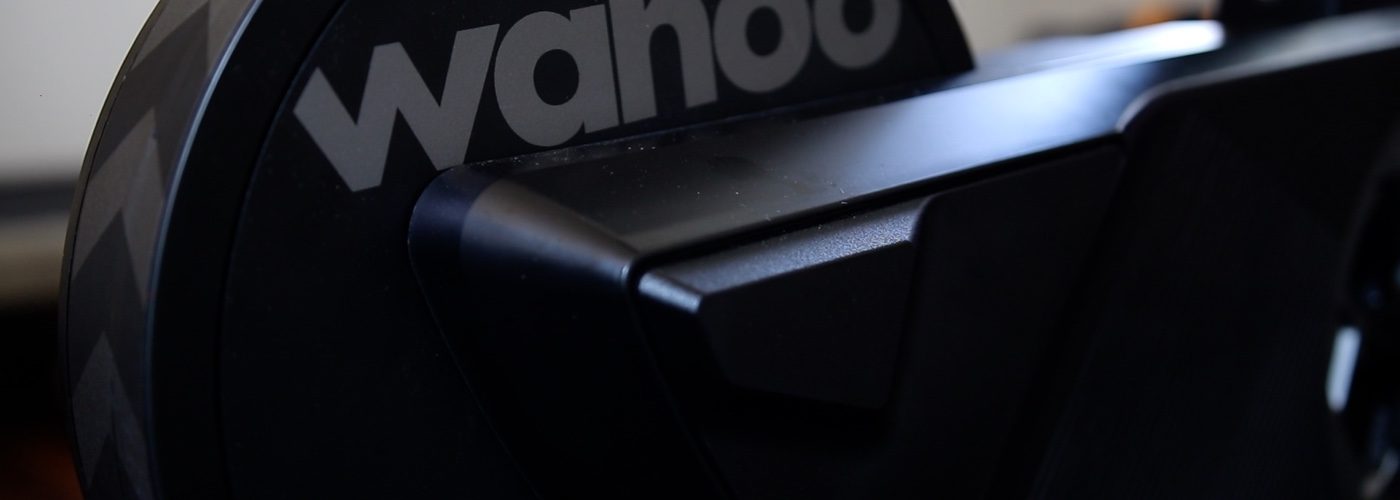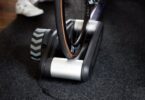PROS
- Accurate power & cadence measurement
- Doesn’t require calibration
- Advanced fit and groupset adjustability via Wahoo App
- Tilts to simulate inclines up to 20% and declines up to -15%
- USB charger
CONS
- No tray to hold a tablet or a phone
- The display is small and hard to see
- Can be a little noisy at slower speeds
Without a doubt, 2019 was the year of smart bikes and Wahoo took the stage at Eurobike in 2019 with the announcement of their all new Wahoo KICKR smart bike.
The KICKR Bike is meant for competitive cyclists and triathletes who want to replicate their real road bike indoors with smart functionalities such as connectivity to third party cycling apps, gradient simulation, and ERG mode support.
While I covered everything in the video above, in this post, I will discuss the power accuracy and my final thoughts on the bike. However, if you want to know more about the bike and even listen to how loud or quiet the bike is, then I encourage you to watch the video above.
KICKR BIKE KEY SPECS
- PRICE: $3,500 USD
- MAXIMUM POWER: 2,200 watts
- MAXIMUM INCLINE: 20%
- Minimum DECLINE: -15%
- FLYWHEEL: 13 lbs with an enhanced motor
- POWER MEASUREMENT ACCURACY: +/- 1%
- CALIBRATION: Not required
- WIRELESS COMMUNICATION: ANT+ FE-C, Smart Bluetooth
- OUTPUT: Power, cadence, speed
- GROUPSET: Programmable virtual groupset: Shimano (Di2 or mechanical), Shimano Di2 Synchro, SRAM eTap, SRAM Mechanical, Campagnolo.
- Q-FACTOR: 150 mm
- CRANKS LENGTH: 165mm, 167.5mm, 170mm, 172.5mm, 175mm
- DISPLAY: Small display right to the side of the top tube. Displays connection, selected gear, tilt.
POWER ACCURACY
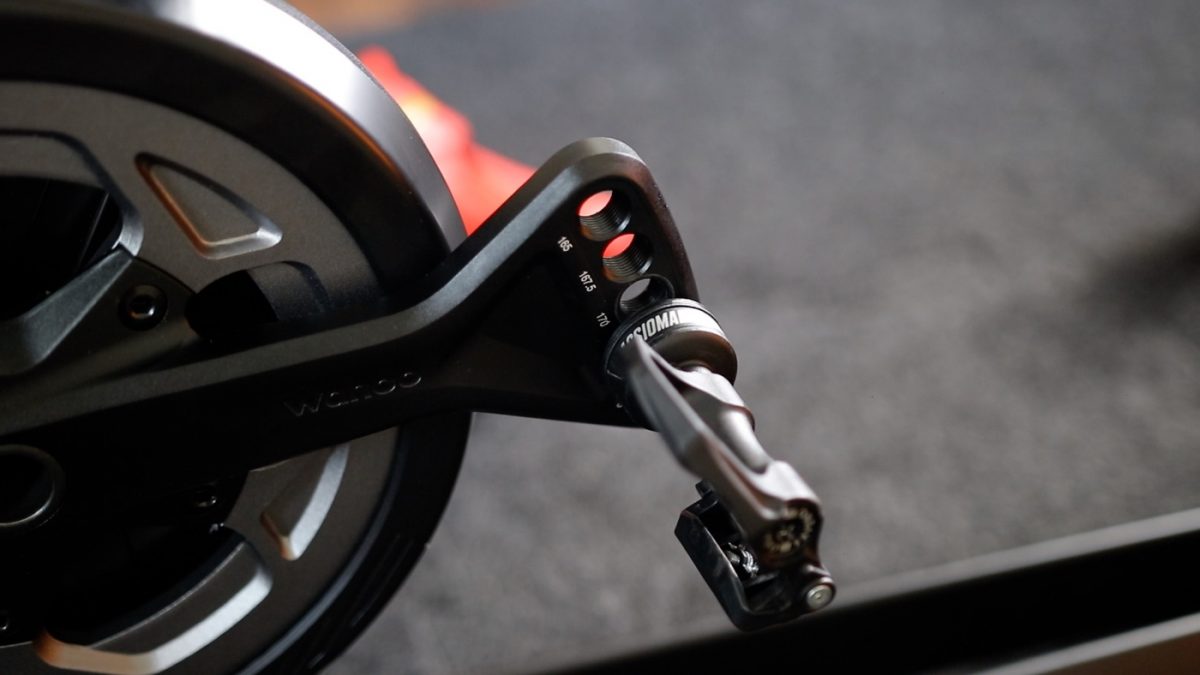
- Power was within +/-1% of my Assioma Duo power meter.
- ERG Mode was quick to respond to changes and smooth.
I have been using the KICKR Bike as my main trainer for a few months now and put it through a lot of riding on Zwift and other platforms. Overall, the bike performed as expected except for one little caveat with power distribution in the small gear which I will talk about in more detail below. But overall, it was within specs and very close to my Assioma Duo pedals on every single ride.
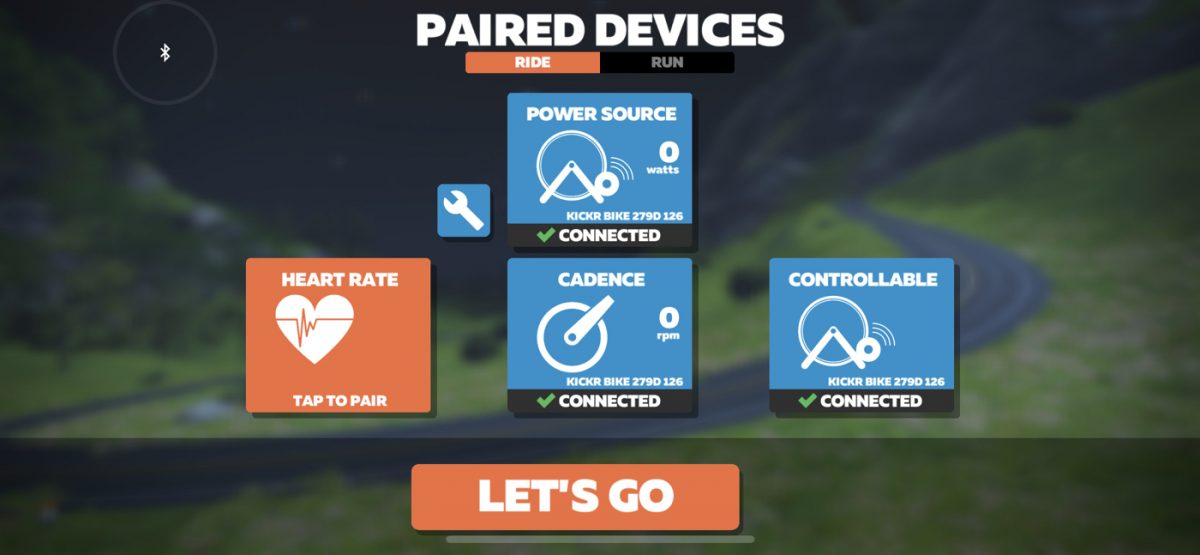
Here is a regular ride on Zwift. Everything looked good from start to finish. The power from the bike and pedals were as close as you would expect. Both averaged 163 watts for the full ride.

ERG MODE AND POWER DISTRIBUTION
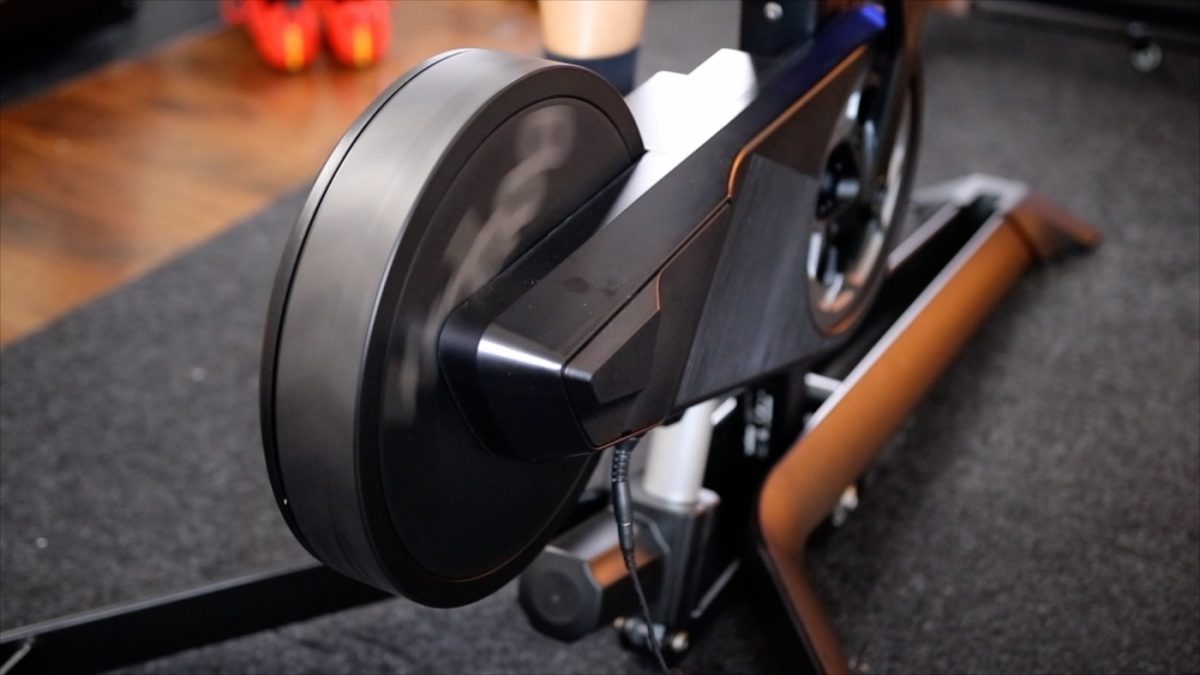
Now, lets’ move onto ERG mode. This is where most problems usually appear but everything was just fine here. There is really nothing worth picking on. The KICKR was measuring a tiny bit higher but was still within +/-1% from my Assioma.

Here is a close up from TrainerRoad recording of those 20sec on/off sections at the beginning. The reason I have these in here is to get me warmed up, but also to see how fast the bike responds to changes in ERG mode. The bike was quick to ramp me up to target power and ramp the power down.
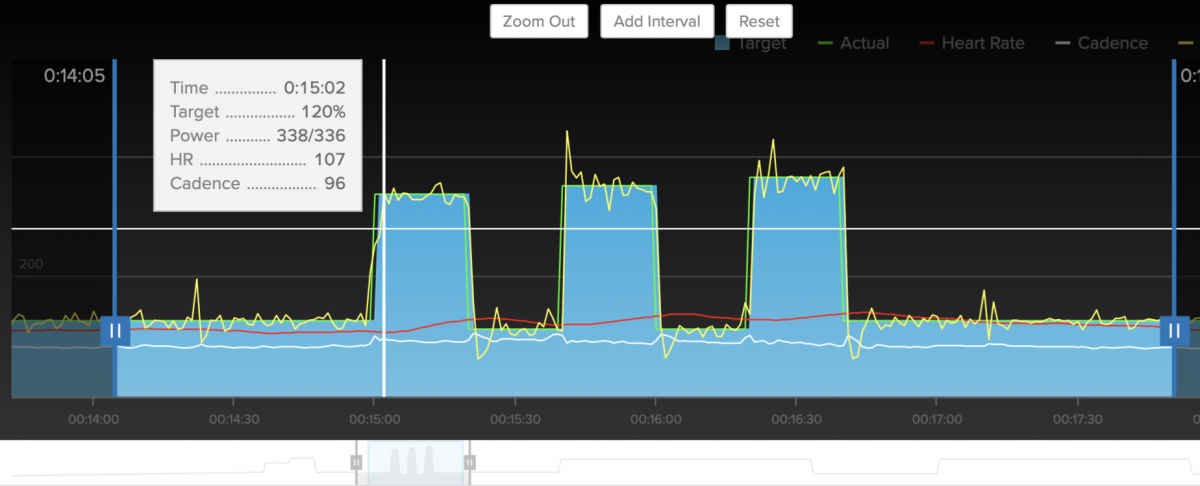
As for the rest of the workout, as you see in the table below, the bike was off by 1 watt from target power for whatever reason during the 10-minutes intervals and in the last interval, it was off by 2 watts. Also, gear selection didn’t have an effect on how the KICKR bike measure power. Everything looked good from a power measurement standpoint.

Moving on to power distribution. Power distribution is another metric I like to look at when testing ERG mode to see how good and quick a trainer is in making quick and tiny adjustments to keep me at my target power.
Overall it was as good as you would expect except for the first 10-minute interval. Now, just to be clear, this doesn’t indicate anything is wrong and I will explain below.
The first interval was done in a small gear ration (1/3). Usually, in a gear like this, I see very smooth power lines and power distribution for the 10 minutes. Meaning, the trainer is able to keep me +/-10 watts from my target power. As an example, the KICKR direct drive trainer usually scores above 92%. Meaning, I was within +/-10 watts over 9 minutes during the 10 minutes interval. However, the Kickr Bike only scored 76%, meaning, I spent 7:30min within +/-10 watts of my target power. This means a lot of time spent over/under +/-10 watts. As you see in the table below, I spent 1:29min under 233 watts and almost a minute over 253 watts.

Like I said earlier, this doesn’t indicate anything wrong – at least in this case. It’s just a different behavior than what’s usually the case with a KICKR direct drive trainer. I actually prefer it this way because it feels more natural to me. Also, the speed recorded was 21.2 mph where the KICKR direct drive trainer records a speed of around 13-15mph when you use a small chainring.
Also, the speed broadcasted by the bike didn’t change regardless of gear selection which tells me the speed reported is the result of ERG mode speed simulation.

So why am I mentioning this? If you are used to smoother power lines when using the KICKR in a smaller gear, you will see a little more variation in power than what you are used to. This is totally normal. Wahoo also has a power smoothing option which you can enable in the Wahoo Fitness app if you don’t like to see power fluctuates as much.
You can find power smoothing in the Wahoo Fitness app under Sensors > Erg Mode Power Smoothing.
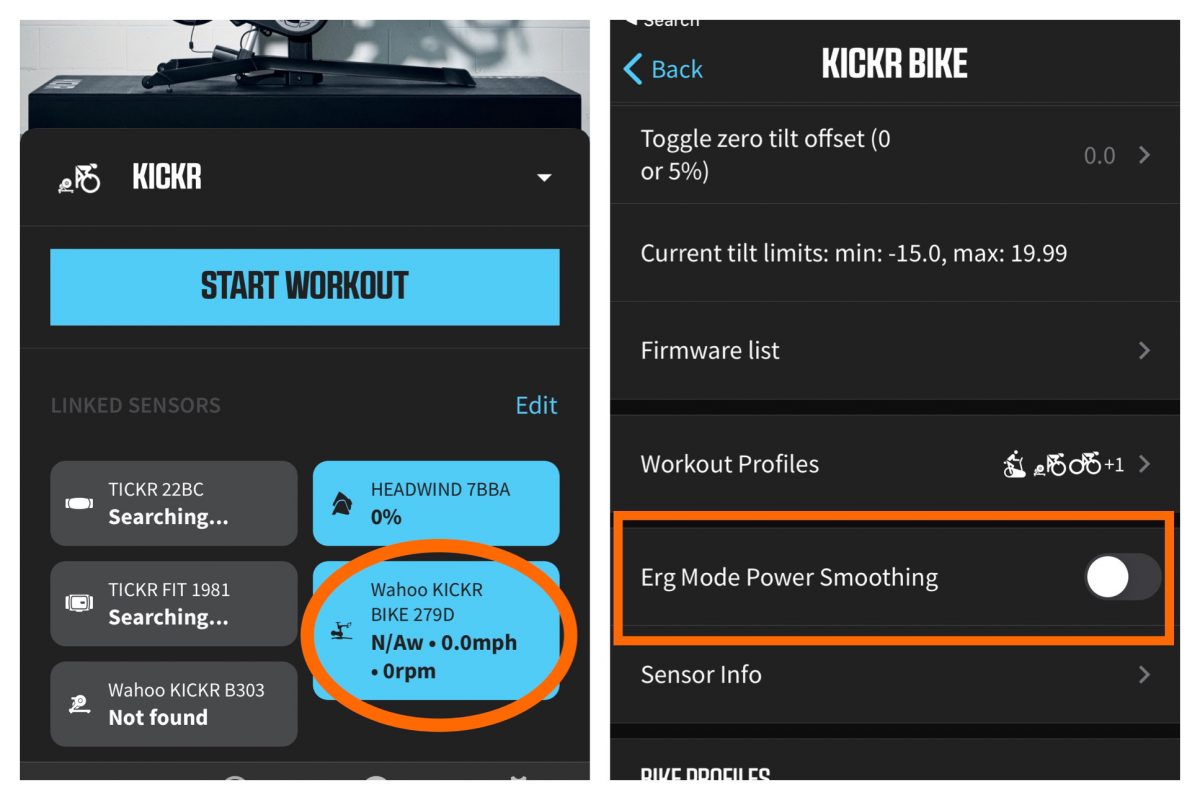
CADENCE
The KICKR smart bike measures and broadcasts cadence so there is no need to purchase a separate cadence sensor. The bike measures cadence accurately and I didn’t see any issues when comparing it to my Assioma Pedals cadence measurement. All is good again.

FINAL THOUGHTS
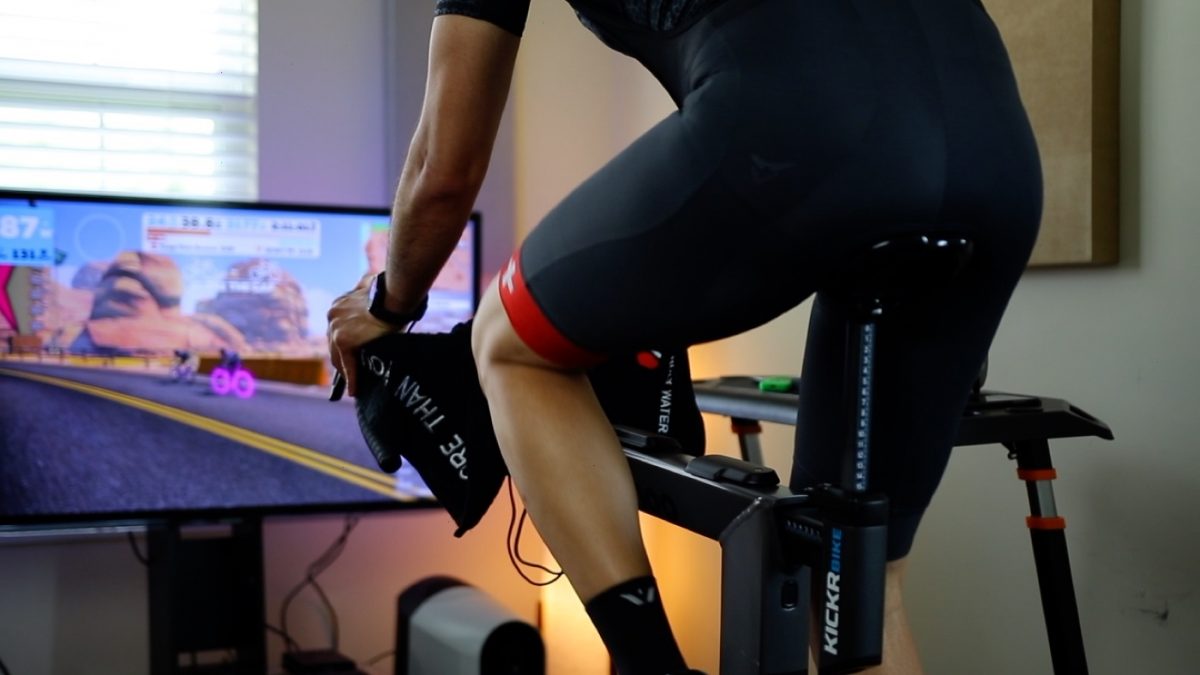
The KICKR Bike is a solid and advanced smart bike that is full of features and will make riding indoors a lot more enjoyable and streamlined. It’s accurate, doesn’t require calibration, and it is not loud.
The CLIMB, and traditional bike design along with the Wahoo Fitness app makes it easy to replicate your bike fit and create different profiles with different fit and shifting. The 6 adjustment points are easy and quick to do and make sharing the bike with other members in your household easy.
However, I did miss not having a place to keep my iPhone or a tablet. My guess is Wahoo is hoping that most will go and purchase the KICKR Desk for another $250 and possibly get the Wahoo ELEMNT or BOLT bike computer to use instead of including a display to complete the bike setup which will get you closer to $4,000 or even more than that.
Overall, for a gen 1 bike, I think the KICKR bike is well built and feature-rich and should last you many years of constant abuse.
WHERE TO BUY
The KICKR Bike is currently available to order at some local bike shops and online. You can purchase it directly from my affiliate CleverTraining or CompetitiveCyclist.
Thanks for reading!


